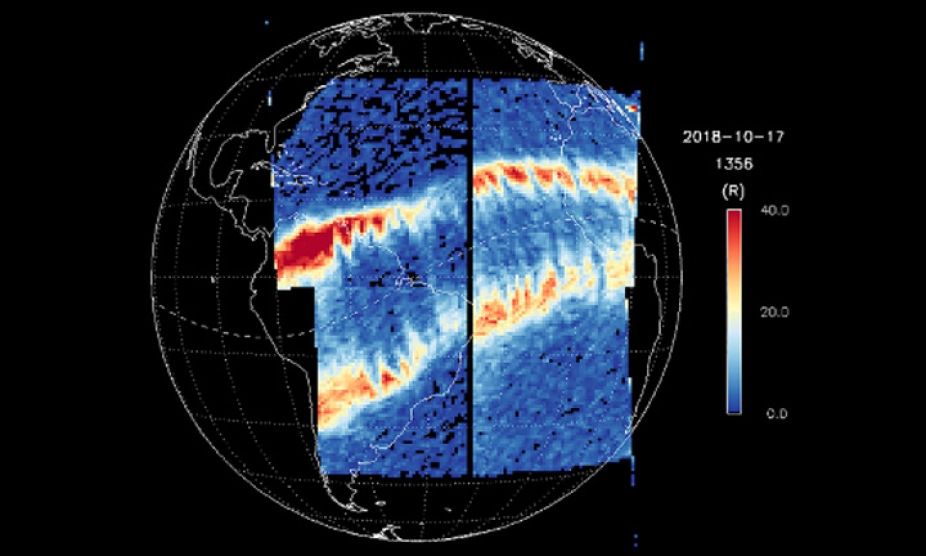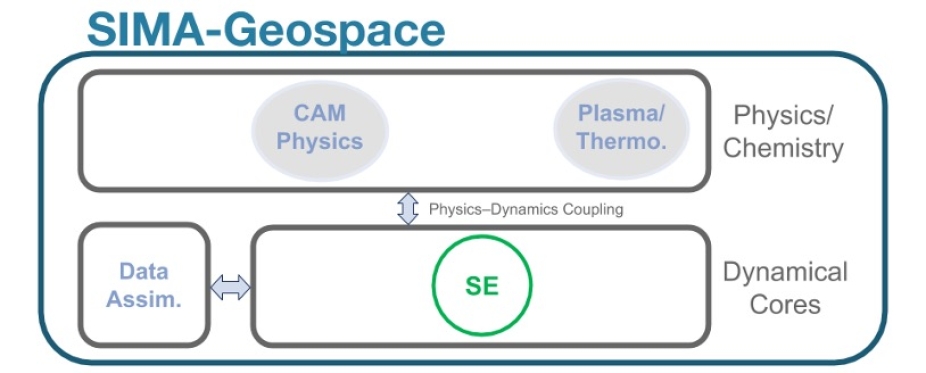Geospace and Atmosphere Interactions
How do multiscale processes and interactions affect geospace-atmosphere coupling and space weather?

Image of an equatorial ionization anomaly (EIA) and plasma depletion bubbles by the NASA Global-scale Observations of the Limb and Disk (GOLD) instrument. The plasma bubbles are the darker streaks within the yellow-red EIA bands
Space weather events that impact communication systems and infrastructure are especially manifested in the ionosphere and thermosphere. These involve disturbances with scales from the global to the mesoscale, such as absorption events from solar flares and energetic particles, damaging electric currents induced at the surface, thermospheric density anomalies affecting satellite orbital dynamics, and small-scale plasma instabilities causing scintillations in radio wave propagation.
The effects of space weather events on radio communications are well-known, and disruptions of vital safety and support systems are increasingly serious, especially in precision applications such as avionics and in essential infrastructure such as electric power grids and commodity pipelines. Understanding and forecasting space weather is also critical for the integrity and function of low earth orbit (LEO) objects. While ionospheric and thermospheric disturbances can be caused by solar, geomagnetic, and lower atmospheric forcings over a variety of spatial and temporal scales, cross-scale interactions of the forcings are poorly understood, requiring a comprehensive modeling approach to integrate traditional atmospheric models with specialized models for the ionosphere, plasmasphere, and magnetosphere. An integrated geospace modeling tool for high-resolution upper-atmosphere simulation is also necessary to capture small-scale space weather events, such as those of ionospheric equatorial plasma bubbles, shown in the example from the GOLD instrument. This capability can be achieved by the SIMA Geospace configuration, illustrated in the schematic. For this, sophisticated data assimilation techniques will allow exploitation of diverse measurements to better represnt the high-altitude settings. The SIMA Geospace configuration will also enable advances in other frontier science questions such as the impact of climate change and extreme weather events on the inner space environment and the effect of geospace-lower atmosphere interaction on surface weather and climate.

Schematic for SIMA geospace modeling including thermospheric physics and plasma physics of the ionosphere, plasmasphere, and magnetosphere. SIMA is configured here to employ the Spectral Element (SE) dynamical core
Configuration
- 25-km global atmosphere to the ionosphere using geospace models (WACCMX-SE-CSLAM)